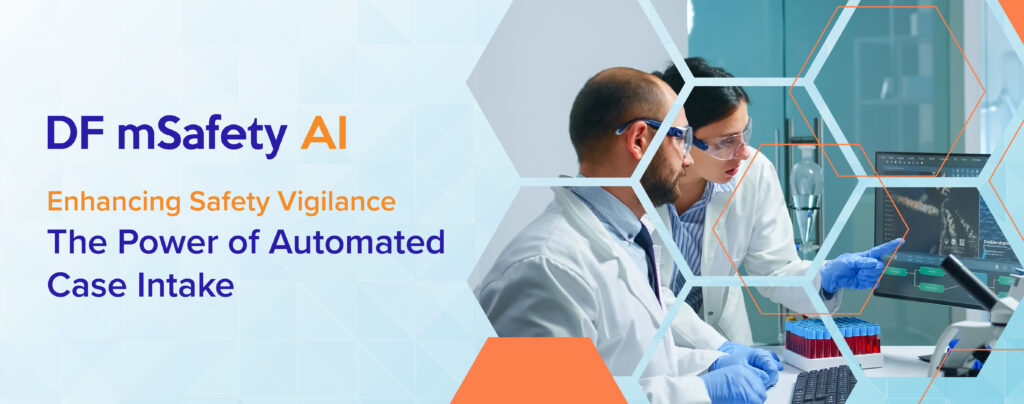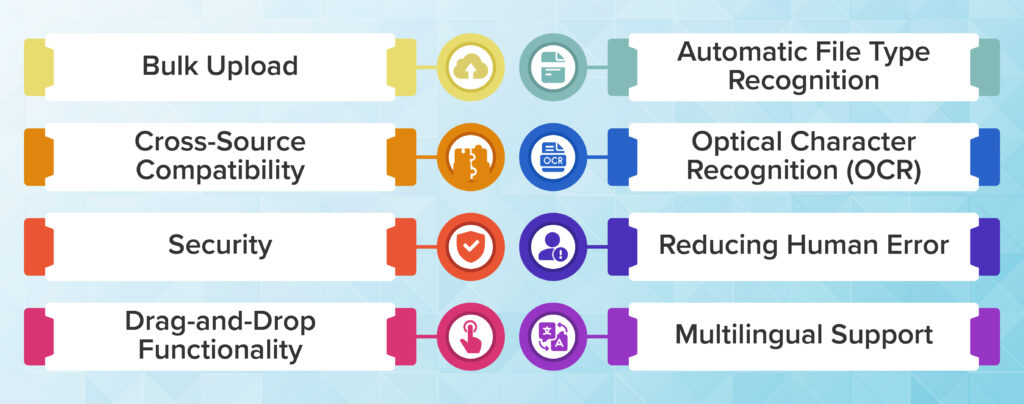
Efficiency of case intake is critical to safety vigilance operations. However, the conventional approach of receiving the safety case information from various sources, and performing a manual case entry in a safety database, is time consuming. In the current scenario where there is a significant increase in the number of adverse events being reported for drugs, vaccines, cosmetics and devices, manual case creation process increases costs and creates compliance issues. Automation of safety case intake is therefore an imperative, but most of the safety platforms in the market make it very hard to implement automation during case creation and processing.
Limitations with Conventional Case Intake
Conventional case intake methods frequently experience:
- 1. Extensive Data Entry: Entering narratives and document information manually can be time-consuming and error-prone, which slows down the intake process.
- 2. Inconsistent Data Capture: With the lack of standardized forms or organized templates, data may be collected inconsistently across cases, which might complicate identification and further analysis.
- 3. Limited File Upload: Users may not be able to submit pertinent documents if systems only support a limited number of file formats or impose size restrictions, which makes it more difficult to thoroughly investigate the case.
- 4. Manual Case Routing and Assignment: Assigning cases to the right teams can be a time-consuming and wasteful process when performed manually.
- 5. Under-reporting: Users may be discouraged from reporting through a tedious or complicated case intake procedure.
These limitations may lead to delayed investigations, lost chances of identifying recurring concerns, and eventually a higher chance of patient or product safety risks.
Narrative Case Intake
Optimizing narrative capture is crucial for effective safety vigilance. In an automated narrative case intake, one could either use a template-based approach along with Named Entity Recognition (NER) models, or the more recent approach of Large Language Models (LLMs), to help automate the process of capturing and analyzing narratives from various solicited and unsolicited sources, including social media, scientific literature, and medical records.
With this approach, users can capture comprehensive adverse event details that include symptoms, treatments, medical history, and results, with minimal room for mistakes. It works especially well for collecting subtle details that organized formats can find difficult to process.
Organizations can boost productivity, identify recurring trends for focused risk management, and ultimately make better safety decisions by concentrating on collecting precise and unambiguous narratives. At Datafoundry, for our AI-assisted Safety Platform DF mSafety AI, we have built solutions using both the template-based NER approach and an LLM with a domain-based RAG model. The results show an efficiency of up to 60% when compared with a manual process.
Benefits of Narrative Case Intake

- ➢ Richer Context: Individuals can provide a detailed description of the event using narratives, in contrast to forms with checkboxes.
- ➢ Increased Reporting Rates: Compared to formal forms, narrative case intake may be less daunting, which may encourage more thorough reporting of safety incidents.
- ➢ Automatic Data Extraction: LLMs can automatically extract relevant data and transform it into structured data from unstructured data for further processing.
- ➢ Finding the Root Causes: In-depth descriptions may highlight underlying issues or trends that existing solutions might overlook.
- ➢ Adaptability and Flexibility: Narratives improve adaptability and flexibility by providing modular and customizable templates that can be easily tailored to capture the specific details of each case.
- ➢ Better Collaboration and Communication: Narratives provide a flexible structure for documenting diverse cases, ensuring that all relevant details are included, which improves the accuracy and completeness of information shared within the team.
Document Upload Case Intake
Document upload involves submitting case information from various data sources like PDFs, Word documents, hand-written notes, faxes, or images eliminating the need for manual data entry.
Users can easily send lab reports, structured forms, and other pertinent documents with case information using this method. Uploading documents can speed up the intake process, particularly in situations where there is a large volume of safety data.
Using OCR (Optical Character Recognition) extraction of text from various sources such scanned patient medical records, adverse event reports, or other documents can be easily done for further analysis and processing. Key information from documents, such as patient names, drug names, medical conditions, adverse events, and dates, can be automatically identified and extracted using NER (Named Entity Recognition). This can enhance the speed and accuracy of data extraction by rapidly detecting relevant data from vast amounts of documents.
The ease and speed with which users can submit case information minimizes the requirement for human data entry. Additionally, giving case information a uniform structure by utilizing OCR and NER algorithms during document upload can help ensure data accuracy and consistency.
Benefits of a Streamlined Document Upload

- ➢ Bulk Upload: Capture large volumes of documents in a faster and more efficient way.
- ➢ Automatic File Type Recognition: Categorize uploads for easier access using automatic file type recognition.
- ➢ Cross-Source Compatibility: Availability of diverse data formats for upload.
- ➢ Optical Character Recognition (OCR): Converting scanned documents or images containing text into editable and searchable digital text formats.
- ➢ Security: Encryption protocols and secure file storage ensuring data security.
- ➢ Reducing Human Error
- ➢ Drag-and-Drop Functionality: Effortless document uploads using drag-and-drop feature.
- ➢ Multilingual Support: Multiple language support to cater to diverse reporting communities.
For the automated case intake from both Narratives and Document Upload, it is important to provide an interface to the users (Safety Case Processors) whereby they can review the cases created through automation, confirm the accuracy with the source as needed, and approve the valid case creation. This process step can be configured as part of the case triage and work assignment module which can again be automated based on business rules.
In conclusion, these two methods, narrative capture and document upload offer valuable benefits, and the choice between them should be made based on the organization’s goals, available resources, and operational needs. Organizations can strengthen their safety vigilance procedures by choosing the right case intake method ensuring better health outcomes.
Datafoundry’s AI assisted Safety Platform DF mSafety AI offers automated case intake features through our pre-trained models for Narratives and Documents, in addition to automation to assist medical review process such as MedDRA coding, Seriousness Prediction, Causality Assessment and Auto-narrative generation.

